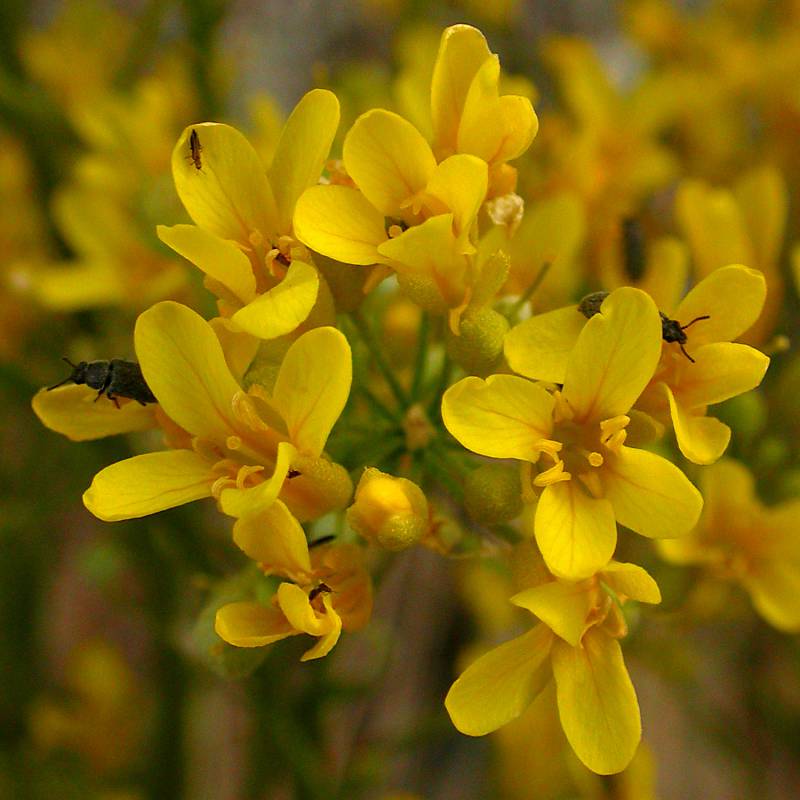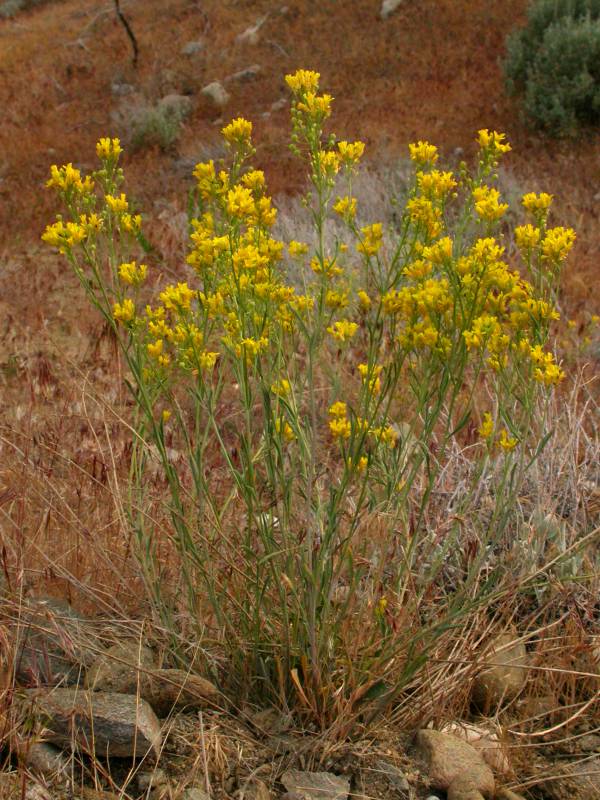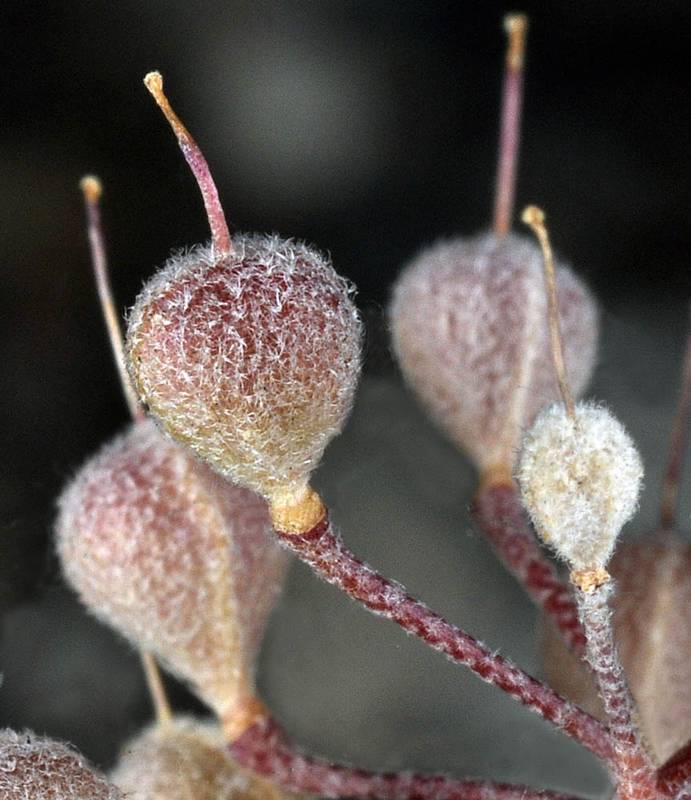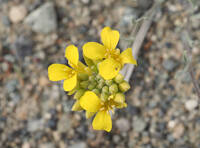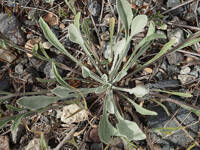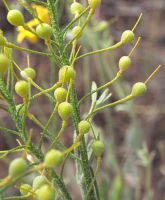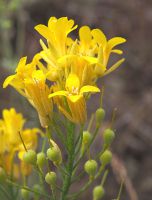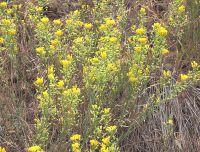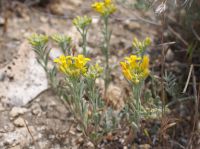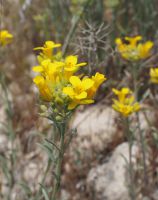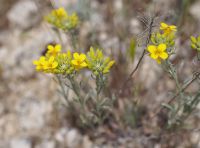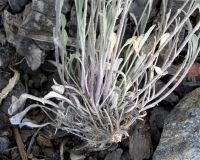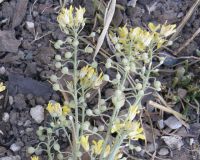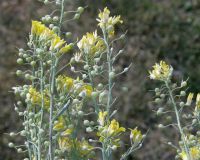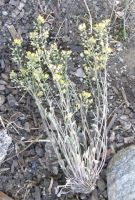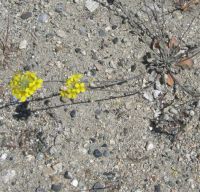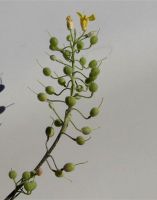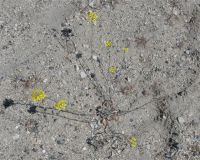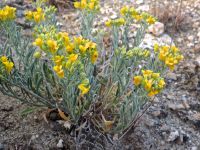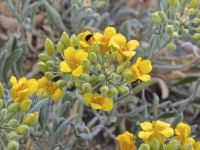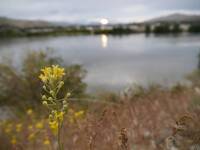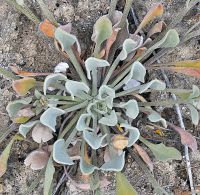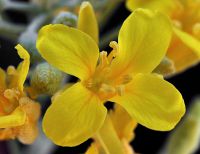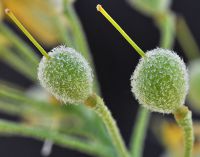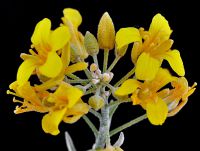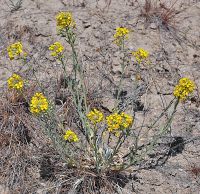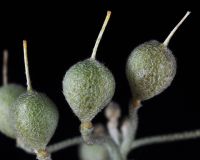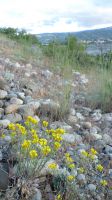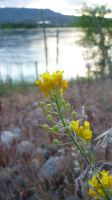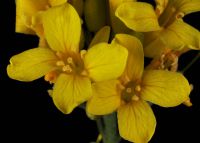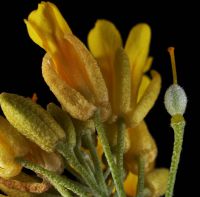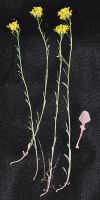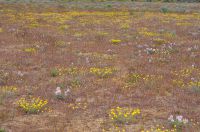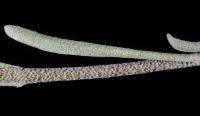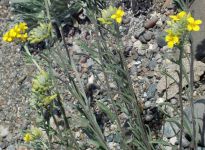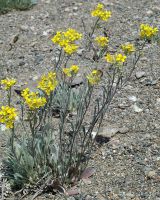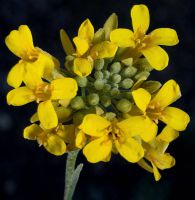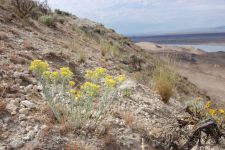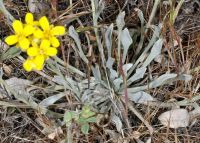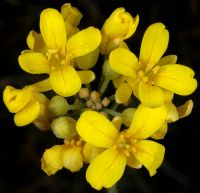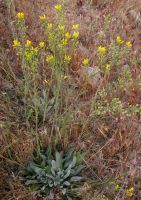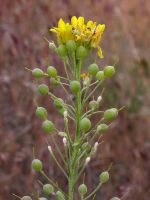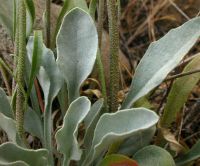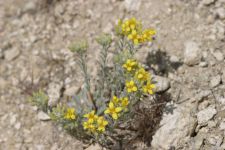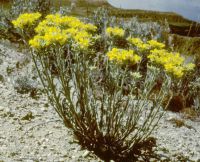Distribution: Occurring east of the Cascades crest in Washington; British Columbia to northern Oregon, east to northwestern Montana.
Habitat: Common in sagebrush desert, especially near or in juniper or ponderosa pine woodlands.
Flowers: March-July
Origin: Native
Growth Duration: Perennial
Conservation Status: Not of concern
Pollination: Bees, flies
Herbaceous, grayish perennial with a simple crown, the several to numerous, erect stems 2-4 dm. tall, simple or branched above.
Basal leaves 3-12 cm. long, the blade oblanceolate to obovate, entire to remotely toothed, 2-15 mm. broad, tapered to a petiole at least as long; cauline leaves alternate, numerous, linear to linear-oblanceolate.
Inflorescence racemose; pedicles slender, 6-17 mm. long, erect and nearly straight to S-shaped or recurved; sepals 4, the outer pair somewhat saccate at the base; petals 4, yellow to yellowish-orange, 6-9 mm. long; stamens 6, the filaments slender; style about equaling the silicle.
Silicles inflated, nearly globose or a little broader above the center, 3-4 mm. long and broad; seeds in 2 series, not winged.
Publication: Novon. 12: 322. 2002.
-
ssp. douglasii – Douglas's bladderpod
 Occurring east of the Cascades crest in Washington; British Columbia to northern Oregon, east to northwestern Montana.
Occurring east of the Cascades crest in Washington; British Columbia to northern Oregon, east to northwestern Montana. -
ssp. tuplashensis – White Bluffs bladderpod
 Occurring east of the Cascades crest, where endemic to the White Bluffs of Franklin County along the Columbia River.
Occurring east of the Cascades crest, where endemic to the White Bluffs of Franklin County along the Columbia River.
PNW Herbaria: Specimen records of Physaria douglasii in the Consortium of Pacific Northwest Herbaria database.
WA Flora Checklist: Physaria douglasii checklist entry.
OregonFlora: Physaria douglasii information.
E-Flora BC: Physaria douglasii atlas page.
CalPhotos: Physaria douglasii photos.
USDA Plants: Physaria douglasii information.

